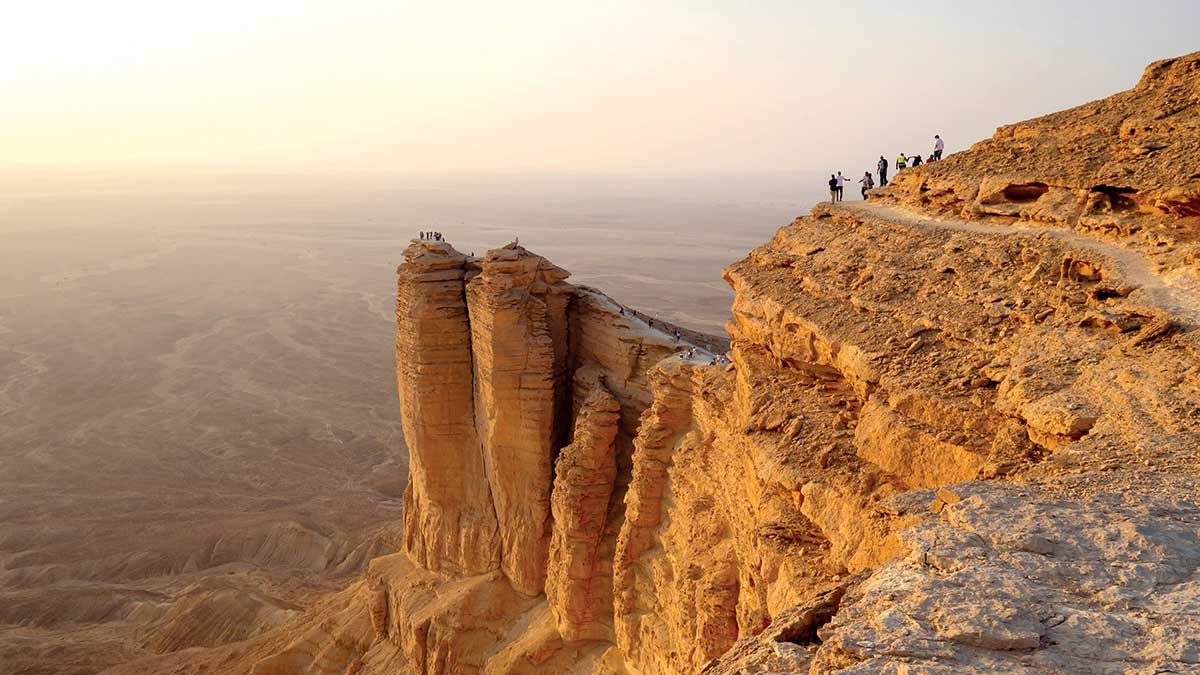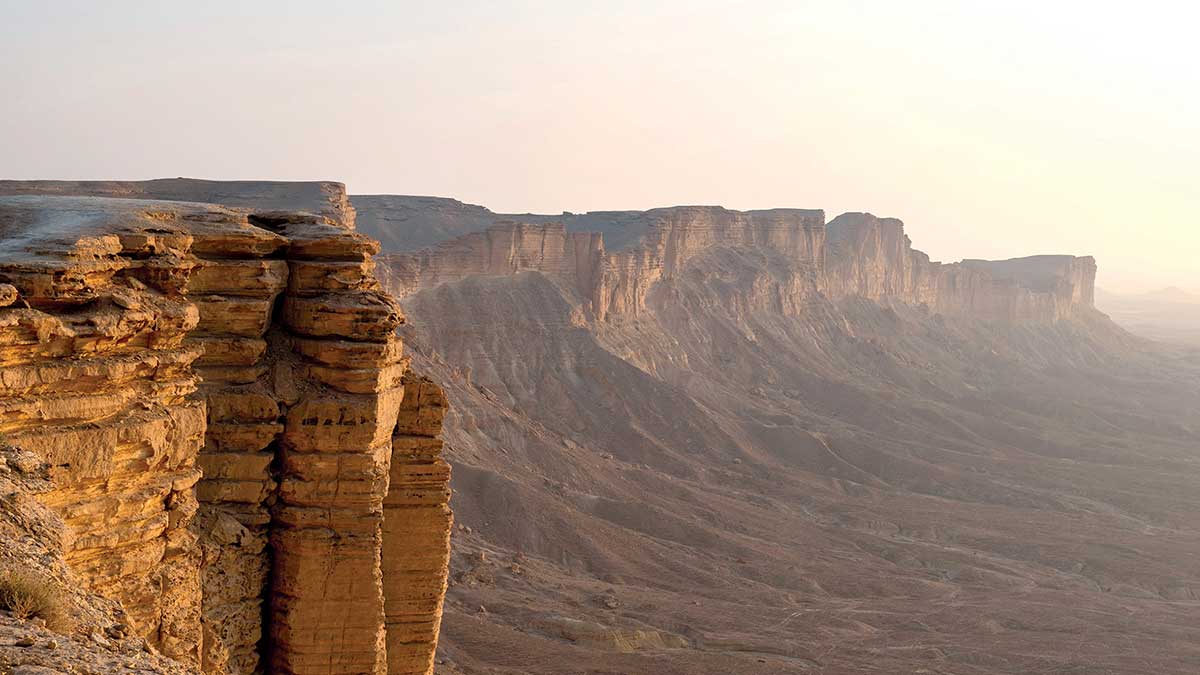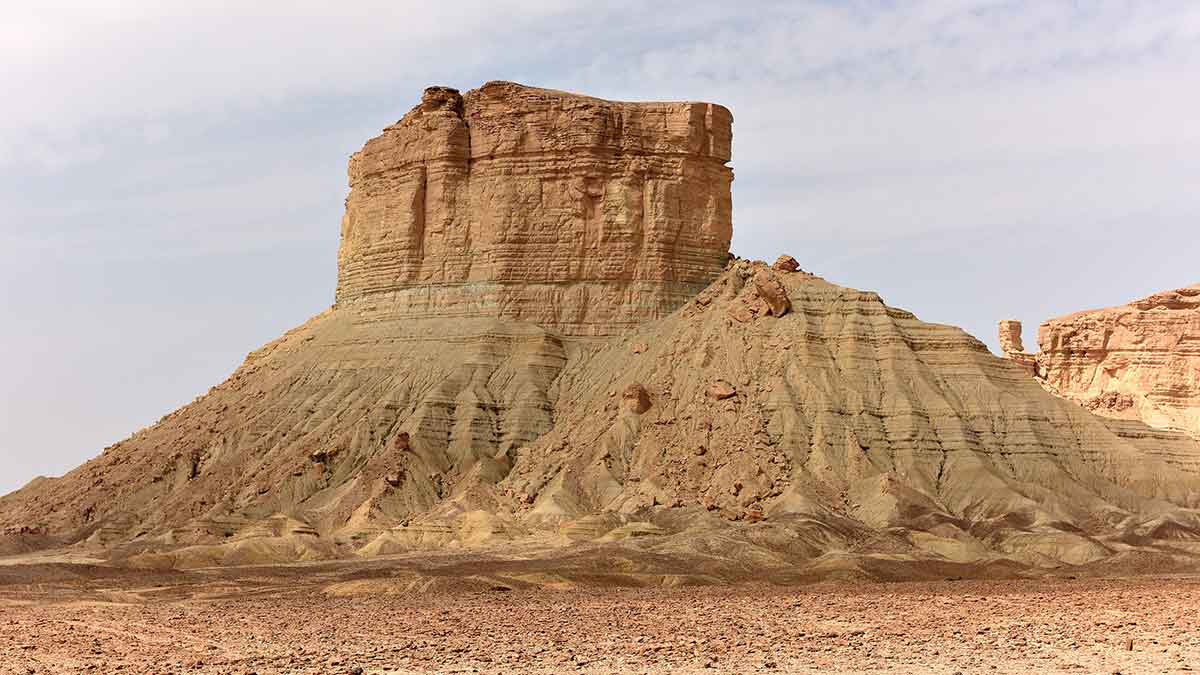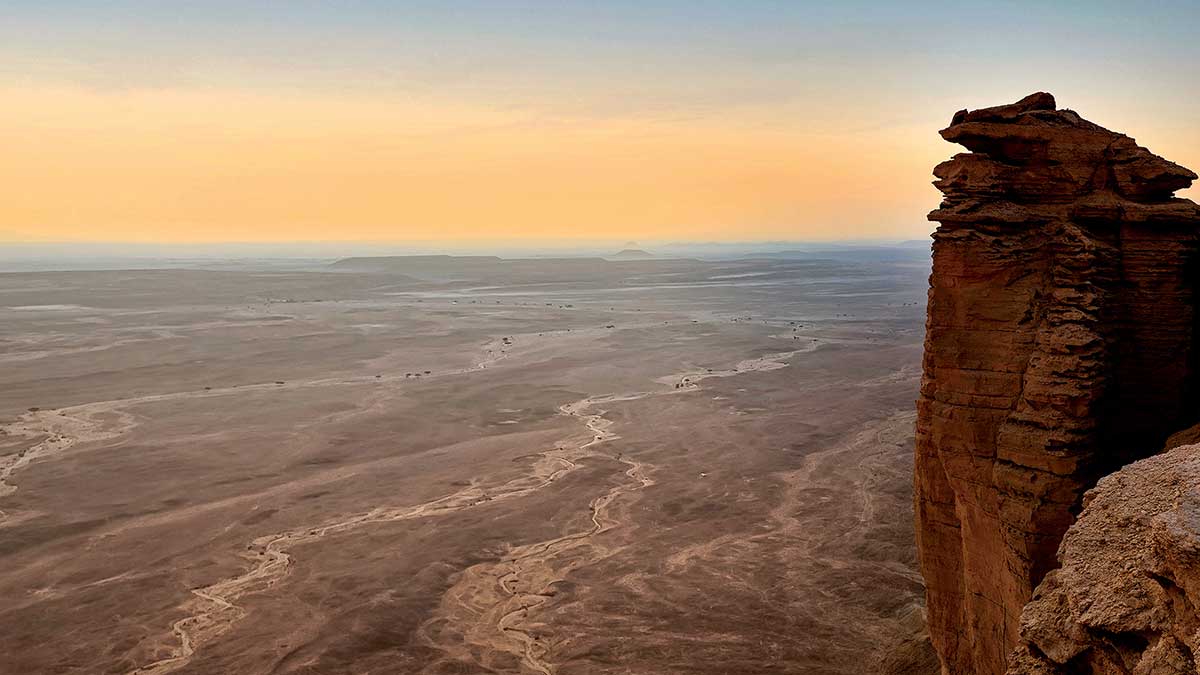Geological Marvel
Edge of the World rocks

Global February 04, 2021 - By
Formation’s ancient beginnings under the waters of ‘Paleo-Tethys Ocean.’
Towering dramatically over a barren desert floor stretching to the horizon, the Edge of the World, or Jebel Fihrayn, is a geological wonder.
The carbonate rocks form sheer cliffs surrounding the beautiful city of Riyadh like a necklace, encompassing the capital from its northwest to southeast limits. Similar in appearance to the Grand Canyon, located in the U.S. state of Arizona, the imposing cliffs are of different rock types and have experienced different weathering.
The rocks of the Edge of the World started the sedimentation process in a marine environment known to geologists as the “Paleo-Tethys Ocean,” which covered the entire eastern half of the Arabian Peninsula 160,000,000 years ago.
“Marine? Near Riyadh?” asked Misfir A. AzZahrani, executive director of Exploration, rhetorically.
“Some might question this, but the answer is definitely ‘yes’,” said AzZahrani.
“Look around you when you are on any route to the cliffs, and you will certainly be able to collect at least four or five different types of marine fossils. On the top of the flat surfaces, you might even see big coral reefs,” he added.
“These collections are exactly similar to those found near the shorelines today. Obviously, these sea creatures have not traveled across the desert all this distance to find themselves here.”
Growing interest in natural beauty
The Edge of the World is the most popular part of the Tuwaiq escarpment, which runs approximately 800 km in length from Al Qasim in the north to the Rub’ al-Khali, or Empty Quarter, in the south.
Recently, the site has attracted hundreds of thousands of visitors from the Kingdom and around the globe. The Edge of the World is 90 km northwest of Riyadh with road signs directing travelers to the area. There are multiple routes, but vehicles are required to eventually leave the bitumen road and drive across the rough desert to reach the top of the escarpment. Once there, it is a walk on rocky terrain and loose gravel to the overlook to enjoy the breathtaking views.
“Standing on the edge gives one the feeling like being a bird ready to spread its wings to fly over the wide plains of the lowlands underneath,” said AzZahrani.
But in the wider sweep of time, these beautiful golden rock walls standing strongly as they endlessly face the emptiness hold a different proposition. Geologists have analyzed this section of the stratigraphic column and concluded that it forms the source rocks of most of the oil found in Ghawar, and other oil fields in the area.
Generated oil migrated to shallower rock units, one of which is the Arab Formation. The same rocks are exposed in Riyadh, but the oil has not accumulated there due to a lack of entrapment.






